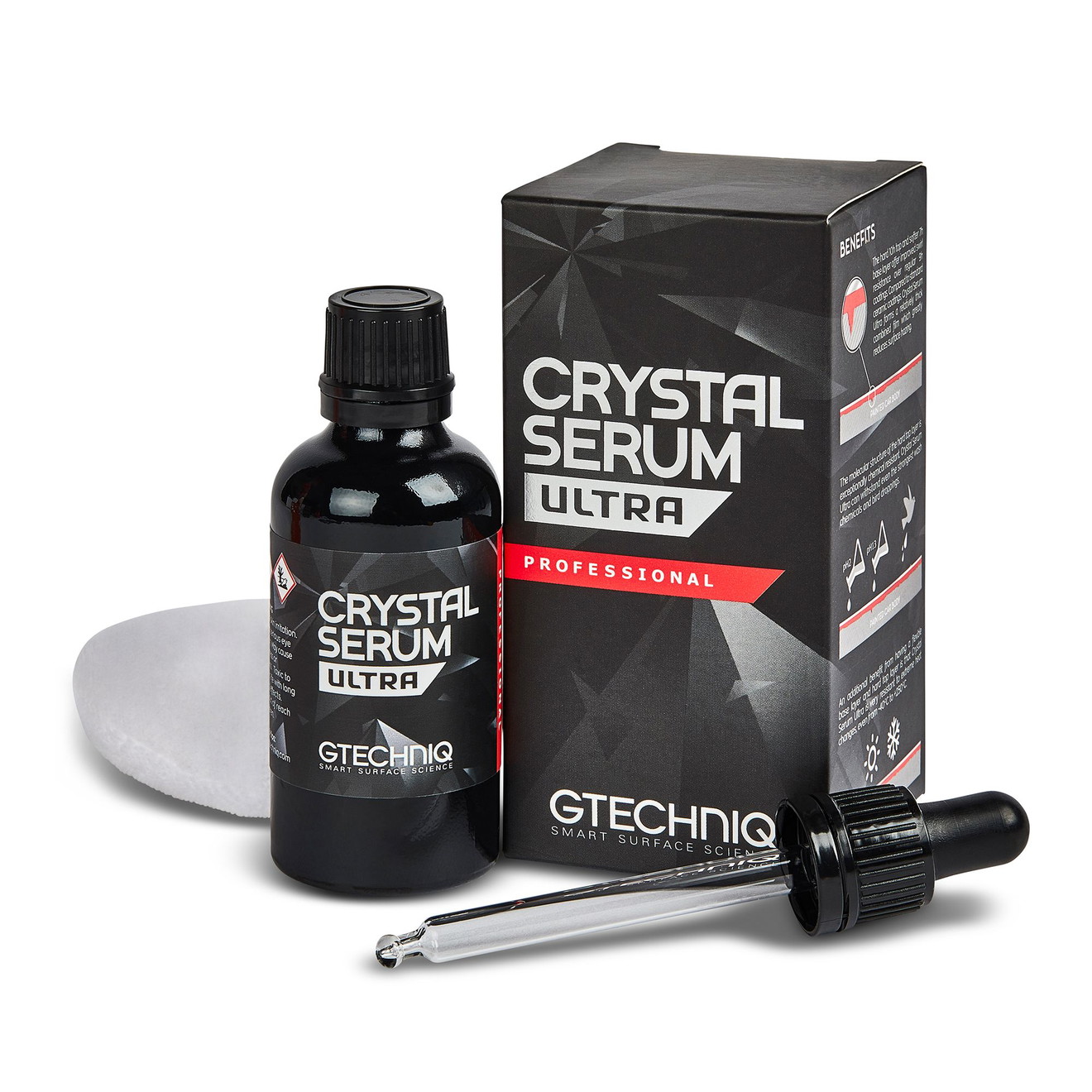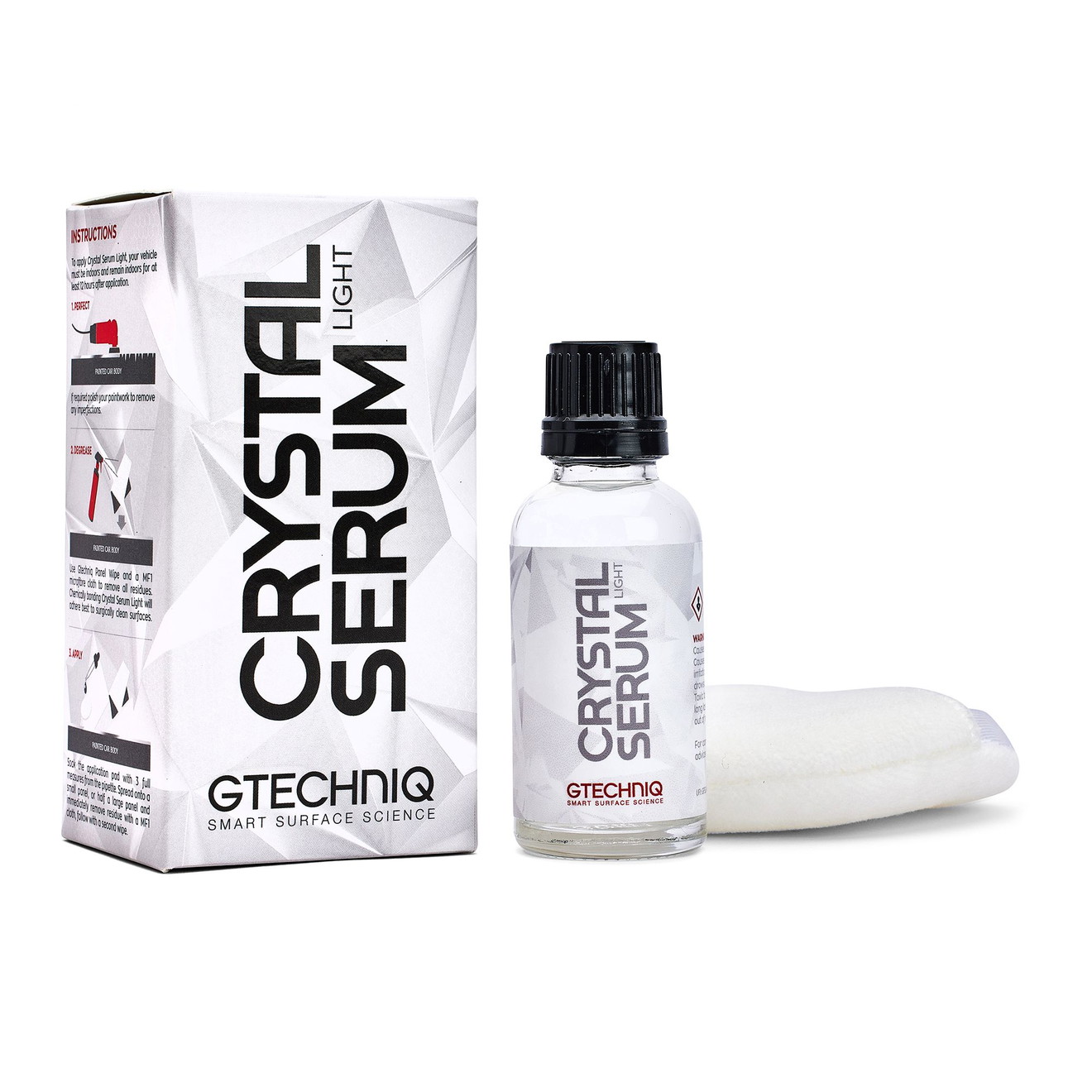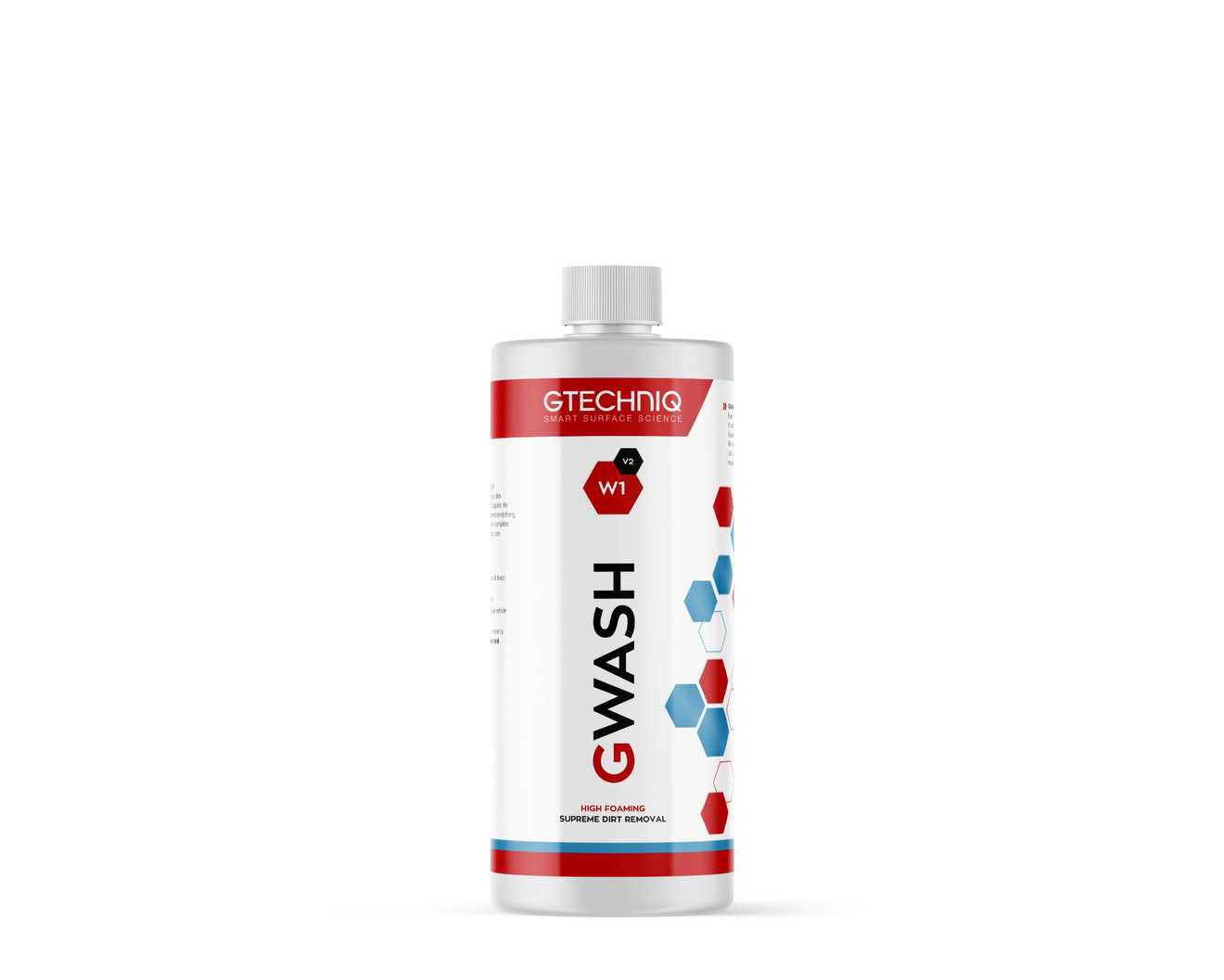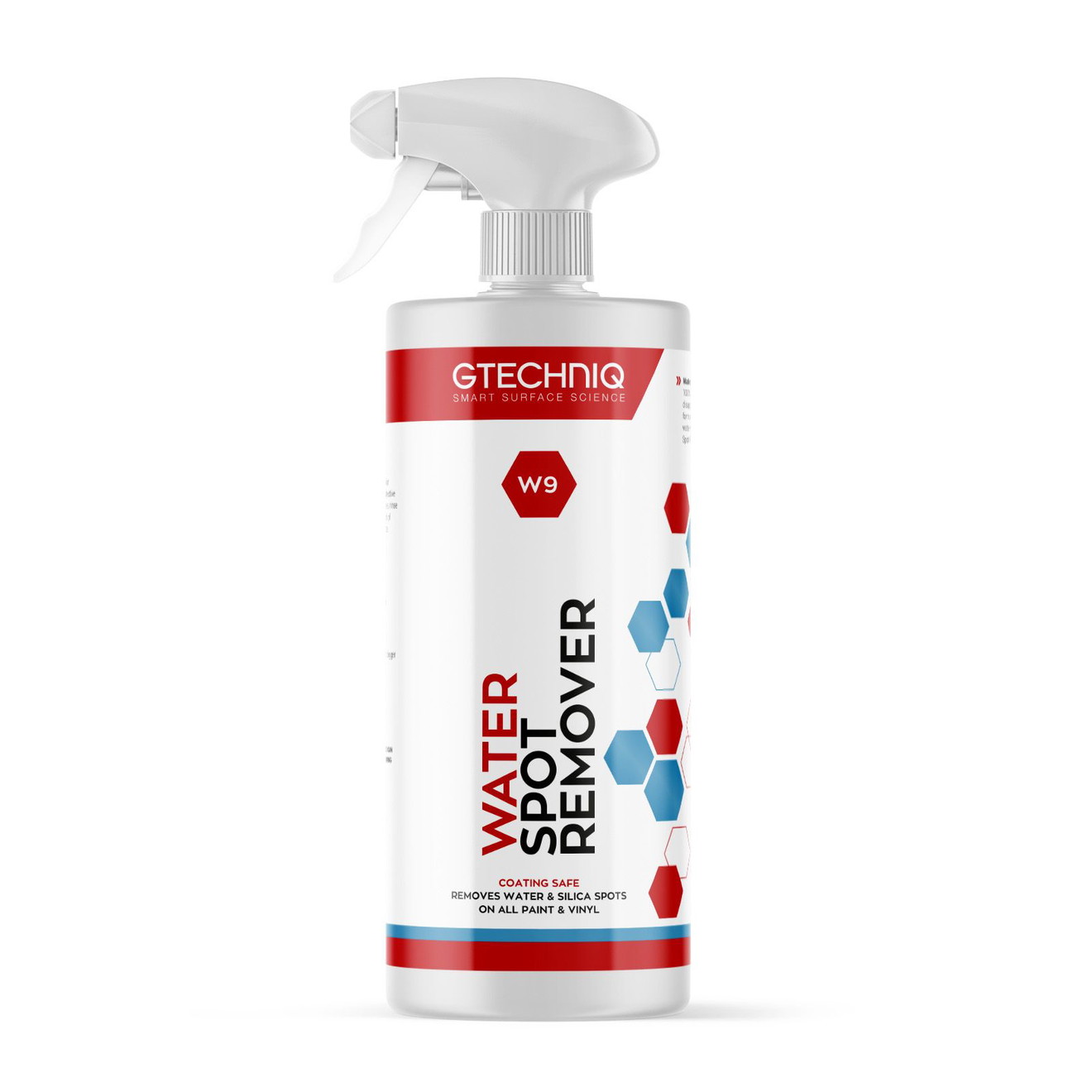Ceramic vs. Graphene Coating for Car Paint:
Gtechniq CSU Crystal Serum Ultra vs. ArtDeShine NGC Nano Graphene Coating
Advantages of Graphene and Ceramic Coatings
Graphene coatings and ceramic coatings are considered groundbreaking technologies designed to maximize the protection and aesthetics of automotive paint. Ceramic coatings, such as Gtechniq CSU Crystal Serum Ultra, stand out for their exceptional durability, UV resistance, and chemical resistance. Graphene coatings, like Art De Shine NGC Nano Graphene Coating, are often marketed as an innovation that enhances hydrophobicity and improves protection against water spots.
The KRÜGER GmbH, a leading provider of ceramic coatings and paint protection solutions, conducted extensive tests with both ArtDeShine NGC v3 and Art De Shine NGC Plus v4. The results showed that both variants deliver similar performance and consistent results.
Chemical Resistance Test Comparison: ArtdeShine Art De Shine Nano Graphene NGC Plus v4 coating on the left vs. Gtechniq Crystal Serum Ultra CSU coating on the right – Both coatings applied as a single-layer application. The test features a commercially available acidic wheel cleaner – SWAG Acid Wheel Cleaner – visible in red at the bottom section. After rinsing off the cleaner, washing with a pH-neutral solution, and performing a hydrophobicity test, ArtDeShine Nano Graphene Coating shows weaknesses, proving unable to withstand the exposure, resulting in a water puddle. The right side with Gtechniq Crystal Serum Ultra remains unaffected and fully protected.
Chemical Composition of Ceramic Coatings
Ceramic coatings are based on a matrix of silicon dioxide (SiO2) or silicon carbide (SiC), which forms an extremely thin, glass-like protective layer through chemical cross-linking. This layer provides high resistance to scratches, chemicals, and environmental influences. Additives such as titanium oxide can be included to enhance UV protection or other properties. In contrast, products like ArtDeShine NGC Nano Graphene Coating integrate graphene as an additive to provide additional features.
According to experts, including testers from KRÜGER GmbH, graphene in products like ArtDeShine NGC Nano Graphene Coating is merely an additional ingredient. The chemical structure and cross-linking of high-quality ceramic coatings like Gtechniq CSU Crystal Serum Ultra clearly indicate that graphene as an additive has no fundamental impact on the protective effect. Those searching for the best ceramic coating should not base their purchase decision on the presence of graphene.
Self-Healing Effects and Their Origin
On social media and online, there is frequent speculation about the alleged self-healing effects of coatings such as Gtechniq CSU Crystal Serum Ultra and ArtDeShine NGC Nano Graphene Coating. However, these effects typically do not come from the coatings themselves but mainly from the vehicle's clear coat. Therefore, self-healing effects cannot be considered a functional feature of coatings. That said, both Gtechniq CSU Crystal Serum Ultra and ArtDeShine NGC Nano Graphene Coating, due to their flexibility, may help support this effect of the clear coat.
Regardless of whether it’s Gtechniq, Art De Shine, or ceramic or so-called graphene coatings from other manufacturers, the final cured coating layer is between 0.5 to 2 μm (micrometers = 1/1000 millimeter). To achieve a truly visible self-healing effect after scratches on paint surfaces in the long run, a minimum thickness of 10 μm would be required. For comparison: Paint protection film (PPF) like Profilm PPF has a thickness of 150 to 300 μm, while the clear coat of new vehicles ranges from 20 to 50 μm.
Difference Between Ceramic and Graphene Coatings
- Ceramic coatings like Gtechniq CSU Crystal Serum Ultra have been proven to offer the highest scratch resistance and chemical durability.
- Graphene coatings, such as ArtDeShine NGC Nano Graphene Coating, are marketed as a superior technology.
However, no scientifically backed studies confirm that products like ArtDeShine NGC Nano Graphene Coating offer advantages beyond what ceramic coatings provide in practical applications. Reports and tests indicate that Art De Shine NGC Nano Graphene Coating is more prone to dirt adhesion and lacks sufficient resistance to highly acidic cleaners, which could be problematic in daily use. See the discussion on the Tesla Driver and Friend Forum.
Is Graphene Just a Marketing Buzzword?
Graphene is marketed in the automotive care industry as a potentially revolutionary additive for ceramic coatings. Products like ArtDeShine NGC Nano Graphene Coating claim to offer additional properties through the integration of graphene. Based on manufacturer claims, the possible mechanisms could include:
- Cross-linking function: Graphene might act as a reinforcing agent within the ceramic matrix in products like ArtDeShine NGC Nano Graphene Coating.
- Thickener or structural enhancer: Graphene particles could increase viscosity and thus the coating thickness. However, this has not been measurable in tests.
- Matrix reinforcement: Products like ArtDeShine NGC Nano Graphene Coating could enhance mechanical durability with graphene. However, this seems highly unlikely due to the low concentration of graphene.
- Hydrophobicity, gloss enhancement, smoothness: Graphene is advertised as improving water beading, gloss, and smoothness. However, graphene itself is jet black, not smooth, and not hydrophobic. As an additive, these effects also seem unlikely.
- UV protection: Graphene, graphene oxide, reduced graphene oxide, or other variations are said to act as a UV barrier. However, the concentration is likely too low to be effective.
Experience shows that nearly all of the claimed advantages of graphene in products like ArtDeShine NGC Nano Graphene Coating are not actually due to graphene.
Which Is Better: Ceramic or Graphene Coating?
The idea that a graphene coating forms a fully cross-linked graphene matrix on vehicle paint is dismissed as baseless by Stephan Baum, Managing Director of KRÜGER GmbH.
Former US YouTuber ScottHD has demonstrated in his tests that various graphene coatings showed no measurable difference between the base ceramic coating and the added graphene. It becomes problematic when products containing low single-digit percentages of graphene are marketed with misleading claims that create false expectations among customers and ultimately damage the reputation of professional detailing and coating services.
Gtechniq CSU Crystal Serum Ultra: Industry Benchmark for Dirt Repellency, Scratch Resistance, and Chemical Stability
With chemical resistance up to a pH range of 2-13 according to the manufacturer and outstanding scratch resistance, Gtechniq CSU Crystal Serum Ultra delivers unmatched performance. In practice, Gtechniq CSU Crystal Serum Ultra demonstrates chemical resistance far beyond the stated pH 1-14 range and holds up against strong solvents like Koch Chemie EULEX. In terms of dirt repellency, anti-adhesive, and anti-static effects, Gtechniq Crystal Serum Ultra CSU is so effective that it is used in the highest levels of motorsports—without Gtechniq being a sponsor or receiving brand recognition.
Products like ArtDeShine NGC Nano Graphene Coating, including the tested NGC v3 and NGC Plus v4 variants, have not been able to match these levels of performance, according to Stephan Baum. It is also noteworthy that Gtechniq CSU Crystal Serum Ultra has remained unchanged in its formulation since 2017, while other manufacturers frequently release new formulations to maintain sales and promote supposedly improved versions.
Additionally, Gtechniq CSU Crystal Serum Ultra can be used as a 2-layer system by adding EXOv5. EXOv5 significantly enhances dirt repellency and static resistance to dust and grime. For private users, the combination of Gtechniq CSU Crystal Serum Light and EXOv5 offers an alternative that delivers about 80% of the performance of Gtechniq CSU Crystal Serum Ultra.
Gtechniq CSU Crystal Serum Ultra for the Highest Standards
Both Gtechniq CSU Crystal Serum Ultra and ArtDeShine NGC Nano Graphene Coating offer excellent properties and contribute significantly to vehicle paint protection. However, according to Stephan Baum, Gtechniq CSU Crystal Serum Ultra remains the industry benchmark due to its superior chemical resistance, highest scratch resistance, and proven long-term durability.
It is also worth mentioning that Gtechniq Ltd. and Gtechniq Germany & Austria ensure that required safety data sheets are publicly available in compliance with regulations and are regularly reviewed and updated as needed by an independent, accredited company in accordance with REACH / ECHA.






